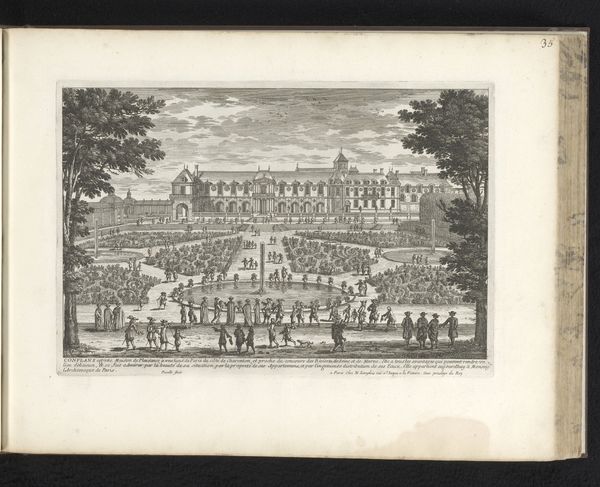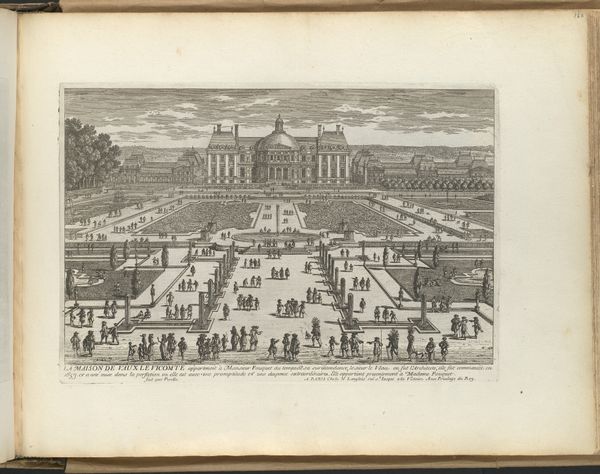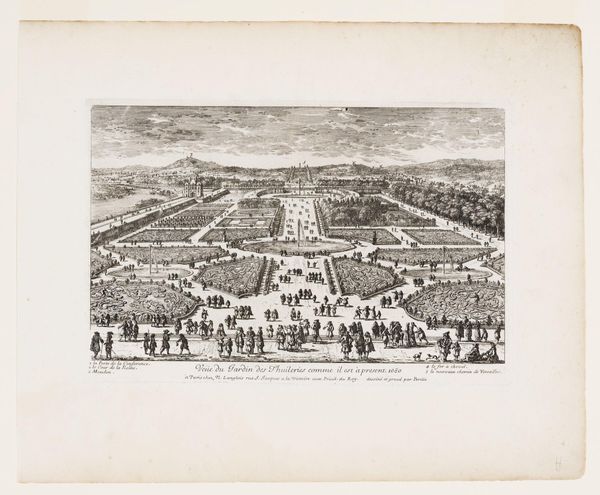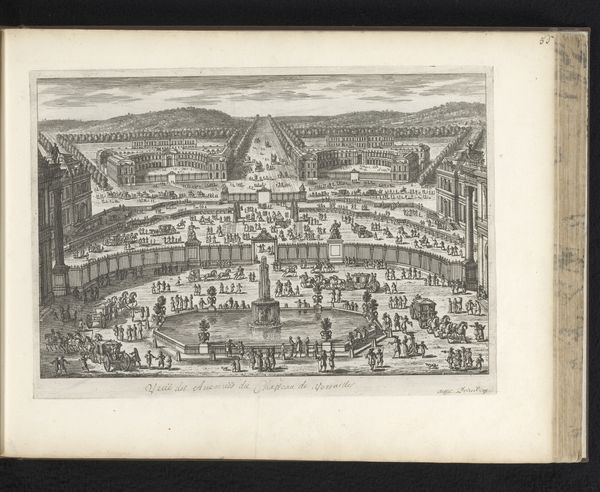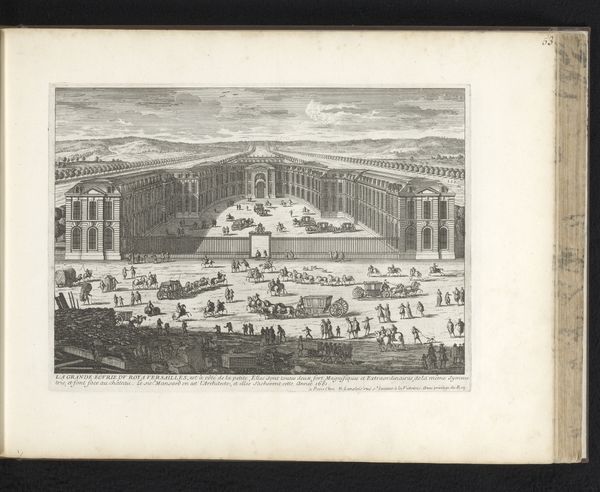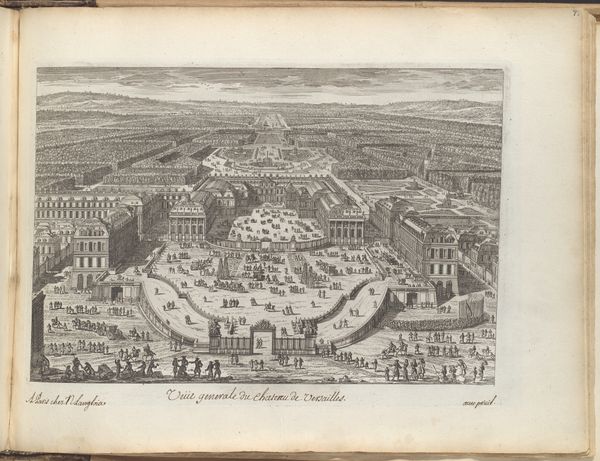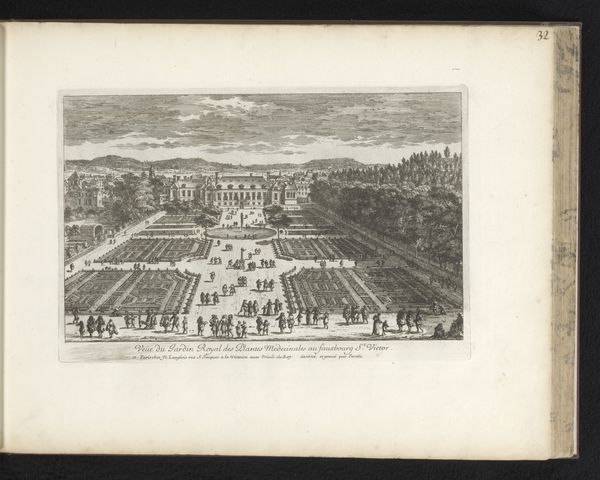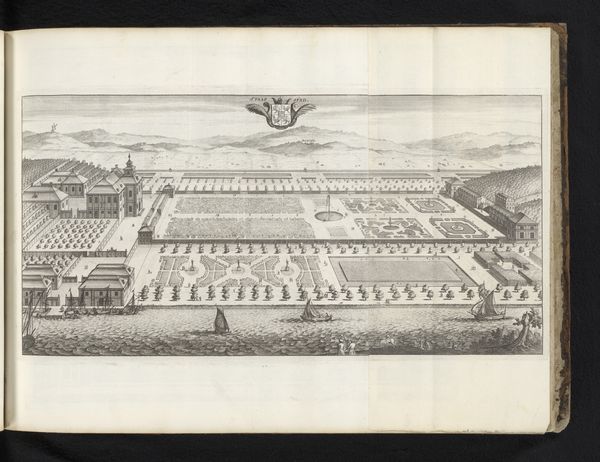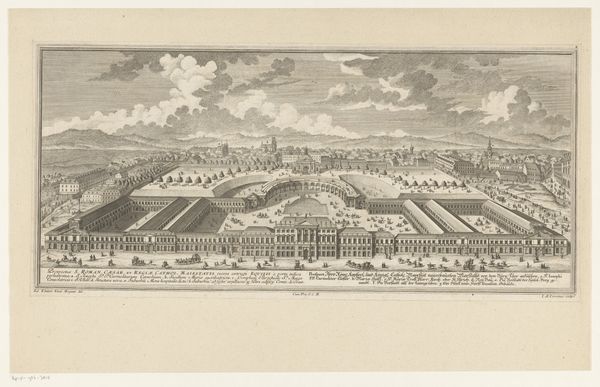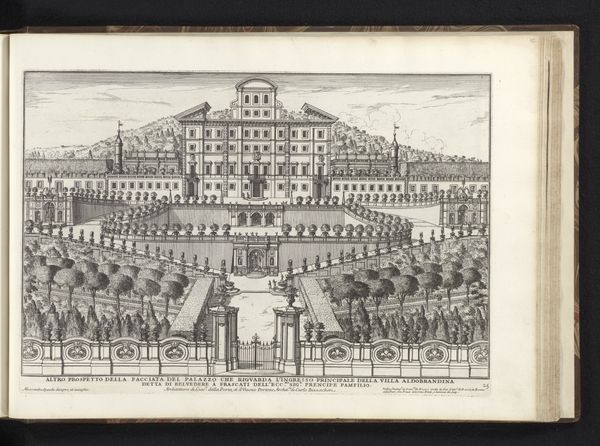
print, engraving
#
baroque
# print
#
landscape
#
line
#
cityscape
#
history-painting
#
engraving
Dimensions: height 203 mm, width 294 mm
Copyright: Rijks Museum: Open Domain
Curator: Looking at this print, it reminds me of the rigid social structures that characterized the baroque era. Editor: I see an intense amount of work here. Look at the sheer detail achieved with simple engraved lines. There had to be specialists designing, cutting, and printing these images. Curator: Precisely. This is Adam Perelle's "View of the Chateau de Clagny" from 1679, held in the Rijksmuseum collection. What we see is not just a building, but an instrument of power—the Chateau itself. The meticulous detail serves a very specific purpose: to glorify the patron, likely someone very close to Louis XIV. Editor: It's propaganda, basically? Beautifully made propaganda. Consider the copper plate itself; acquiring and working that material was no small feat. These prints were likely quite precious. What were they used for? Curator: To disseminate an image of royal magnificence. Think of them as the glossy magazines of the day, showcasing not just the estate but also the culture it represented. Notice the people strolling in the garden? Their arrangement suggests a highly controlled, choreographed social sphere. Editor: Controlled is the right word. Even the landscape is sculpted, molded by human intervention, requiring massive resources and organized labor. Do we know who commissioned the engraving? Was it for private enjoyment or public distribution? Curator: It was likely commissioned to broadcast the king's taste and power. Prints like these would circulate among the aristocracy, reinforcing a certain lifestyle. The medium of engraving allowed for relatively wide dissemination, certainly reaching beyond the immediate circle of the court. It played a crucial role in establishing and reinforcing social hierarchies. Editor: It’s easy to overlook the intense labor involved, especially since the aesthetic is so refined. You could spend hours examining each of the details in this engraving, which makes me wonder, what types of inks were used, and where were they sourced from? How long did it take for one single engraving to be made from start to finish? Curator: That perspective definitely draws out an interesting tension. Focusing on materiality encourages us to consider whose labor went into creating images like these, and whose interests they ultimately served. Editor: Exactly. Understanding the labor of it and social role challenges these grand narratives of art. Curator: That's something to definitely consider, to step away and explore the labor of it all in relationship to its social status.
Comments
No comments
Be the first to comment and join the conversation on the ultimate creative platform.

